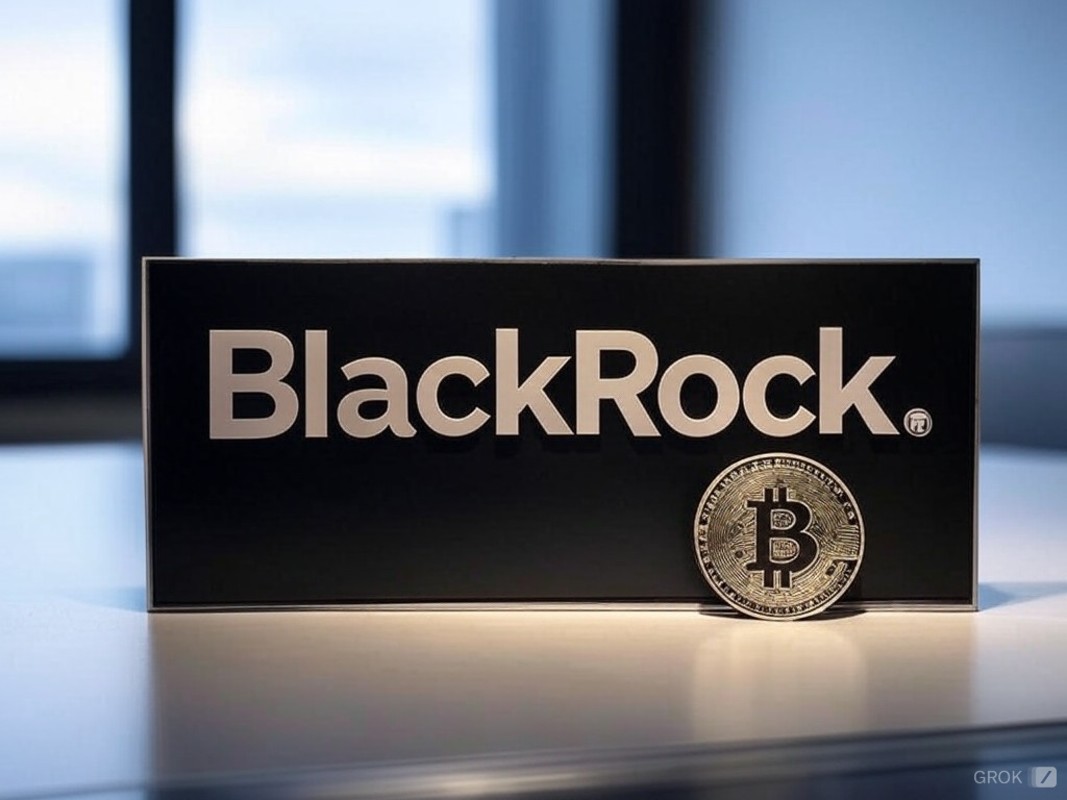What happens when solar panels die?
By the end of 2024, the world will have nearly 2,000 Gigawatts of solar generation capacity in service. Each panel is made of silicon, glass, various polymers, aluminum, copper and an assortment of other metals that capture the sun’s energy. It’s a rule of thumb that, barring damage, a panel will last for up to 30 years before it needs to be replaced. But what happens to all of those raw materials when the current crop of solar panels becomes obsolete? Surely, we’re not just wasting it all, are we? What kills a solar panel? Received wisdom suggests solar panels last for around 30 years, but that’s not the whole story here. “30 years is our best guess,” explained Garvin Heath of the National Renewable Energy Laboratory (NREL). NREL found there was a higher rate of failures at the start of a panel’s life, often due to manufacturing or installation faults. In midlife, only a handful of panels fail. Then the statistics begin to climb northward the closer to the three decade mark you get but, even so, the number of panels that break are “less than one percent” of the total in operation at that time. Matt Burnell is the founder of ReSolar, a British startup looking into reusing, repowering and recycling solar panels. As part of his work, Burnell visited a 40,000 panel array solar farm where 200 of the panels were broken during installation. “I took about 50 from that site, tested them to see their value for reuse [and] generation capacity,” he said, most of which were within the “tolerance range of the manufacturer.” Essentially, for the odd crack in the glass or bump on the frame — which may cause problems down the line — the panels were otherwise perfectly functional. If a panel has survived its birth and installation, then the biggest thing that kills solar panels is the weather. Heath said a common cause is extreme weather events damaging the panel, or even just regular, aggressive weather causing things to degrade. Sadly, once a panel is broken, it’s often not worth the effort to repair. So panels deemed “broken” during manufacture or installation may still be very capable of making power from the sun. But there are also plenty of panels that are being withdrawn from service after 25 or 30 years, even if they aren't broken in any meaningful sense. There's a fairly simple reason solar farms don't allow these panels to soak up rays until they simply cease to function. It’s the economics, stupid. The key issue is efficiency loss, which is when panels aren’t able to generate as much power as they did when first installed. Most solar panels are made with laminated adhesive layers that sit between the glass and the solar cells to hold them together and aid rigidity. Sun exposure can cause those laminated layers to discolor, reducing the amount of light that can reach the cells. That diminishes the energy-generation capacity, which is a problem for large commercial farms. “Manufacturer's warranty their [solar] modules’ performance for a 30-year period,” explained Garvin Heath. For instance, a maker will pledge that its panels will be at least 80-percent efficient for the bulk of its expected three-decade service life. These warranties give large utility-scale customers confidence in what they’re buying, and at the point that term has expired, it’s often far more cost-effective to simply junk and replace them. Power grids have a limited number of interconnections, essentially the on-ramp that enables them to push power to the grid. Each interconnection has a hard upper limit in terms of the power it can send, so solar farms need to generate the maximum permitted electricity at all times. “[Even when] they’re working within warranty performance, the opportunity cost of having a module producing [more] power on your interconnection is quite valuable,” said Heath. ReSolar’s Matt Burnell used an example of a 10 Megawatt solar farm in the UK that had a 15 Megawatt interconnection. “10 years ago, they could only fit 10 megawatts into the space that they had [...] but with newer and more efficient modules, it’s now financially viable for them to strip the asset down and rebuild it.” “You have these big pension funds looking at this from a spreadsheet,” looking for ways to better maximize their investment. The end result is that all of these otherwise fine panels are junked. “When you think about the embedded carbon of bringing [the panels] over [from China]” said Burnell “and then they go into the waste stream [...] seems mad.” Even if panels could be repaired to full efficiency,it’s not likely solar panel repair shops will be opening in droves. “There’s a serious question around the labor costs of testing and repairing versus just buying a new panel,” said Burnell. He added in another example of panels that had to be taken down to address fire safety legislation, which were similarly at risk of being discarded because the effort to repurpose them was too great. To reduce waste, ReSolar actually wound up collecting and

By the end of 2024, the world will have nearly 2,000 Gigawatts of solar generation capacity in service. Each panel is made of silicon, glass, various polymers, aluminum, copper and an assortment of other metals that capture the sun’s energy. It’s a rule of thumb that, barring damage, a panel will last for up to 30 years before it needs to be replaced. But what happens to all of those raw materials when the current crop of solar panels becomes obsolete? Surely, we’re not just wasting it all, are we?
What kills a solar panel?
Received wisdom suggests solar panels last for around 30 years, but that’s not the whole story here. “30 years is our best guess,” explained Garvin Heath of the National Renewable Energy Laboratory (NREL). NREL found there was a higher rate of failures at the start of a panel’s life, often due to manufacturing or installation faults. In midlife, only a handful of panels fail. Then the statistics begin to climb northward the closer to the three decade mark you get but, even so, the number of panels that break are “less than one percent” of the total in operation at that time.
Matt Burnell is the founder of ReSolar, a British startup looking into reusing, repowering and recycling solar panels. As part of his work, Burnell visited a 40,000 panel array solar farm where 200 of the panels were broken during installation. “I took about 50 from that site, tested them to see their value for reuse [and] generation capacity,” he said, most of which were within the “tolerance range of the manufacturer.” Essentially, for the odd crack in the glass or bump on the frame — which may cause problems down the line — the panels were otherwise perfectly functional.
If a panel has survived its birth and installation, then the biggest thing that kills solar panels is the weather. Heath said a common cause is extreme weather events damaging the panel, or even just regular, aggressive weather causing things to degrade. Sadly, once a panel is broken, it’s often not worth the effort to repair.
So panels deemed “broken” during manufacture or installation may still be very capable of making power from the sun. But there are also plenty of panels that are being withdrawn from service after 25 or 30 years, even if they aren't broken in any meaningful sense. There's a fairly simple reason solar farms don't allow these panels to soak up rays until they simply cease to function.
It’s the economics, stupid.
The key issue is efficiency loss, which is when panels aren’t able to generate as much power as they did when first installed. Most solar panels are made with laminated adhesive layers that sit between the glass and the solar cells to hold them together and aid rigidity. Sun exposure can cause those laminated layers to discolor, reducing the amount of light that can reach the cells. That diminishes the energy-generation capacity, which is a problem for large commercial farms.
“Manufacturer's warranty their [solar] modules’ performance for a 30-year period,” explained Garvin Heath. For instance, a maker will pledge that its panels will be at least 80-percent efficient for the bulk of its expected three-decade service life. These warranties give large utility-scale customers confidence in what they’re buying, and at the point that term has expired, it’s often far more cost-effective to simply junk and replace them.
Power grids have a limited number of interconnections, essentially the on-ramp that enables them to push power to the grid. Each interconnection has a hard upper limit in terms of the power it can send, so solar farms need to generate the maximum permitted electricity at all times. “[Even when] they’re working within warranty performance, the opportunity cost of having a module producing [more] power on your interconnection is quite valuable,” said Heath.
ReSolar’s Matt Burnell used an example of a 10 Megawatt solar farm in the UK that had a 15 Megawatt interconnection. “10 years ago, they could only fit 10 megawatts into the space that they had [...] but with newer and more efficient modules, it’s now financially viable for them to strip the asset down and rebuild it.” “You have these big pension funds looking at this from a spreadsheet,” looking for ways to better maximize their investment. The end result is that all of these otherwise fine panels are junked. “When you think about the embedded carbon of bringing [the panels] over [from China]” said Burnell “and then they go into the waste stream [...] seems mad.”
Even if panels could be repaired to full efficiency,it’s not likely solar panel repair shops will be opening in droves. “There’s a serious question around the labor costs of testing and repairing versus just buying a new panel,” said Burnell. He added in another example of panels that had to be taken down to address fire safety legislation, which were similarly at risk of being discarded because the effort to repurpose them was too great. To reduce waste, ReSolar actually wound up collecting and sending on a consignment of those panels to Ukraine for use in a hospital.
In the trash
Another rule of thumb is that only one in 10 solar panels is recycled, with the remaining nine sent to landfills. There is no standard method for tracking a panel’s eventual destination, and it’s not clear how such a system would be implemented. But there’s a risk landfills are about to be overwhelmed with the volume of panels that’ll be coming down from roofs. The Los Angeles Times, for instance, reported on the coming glut of panels in California after the state’s push to get more solar installed from 2006 onwards.
The legal situation is barely patchwork, with Grist describing things in 2020 as the “wild west,” since only Washington has any sort of mandatory legislation. Decommissioned solar panels are covered by federal solid and hazardous waste rules, dependent on the materials used in their construction. If a panel includes heavy metals like lead and cadmium, then they can’t be sent to a general landfill, lest their poisons leech into the soil. But that often just means those panels are redirected to landfills that are designed to handle specialist waste.
The EPA is, at present, looking at developing rules that would standardize the recycling process for solar panels and lithium batteries. But while there are no federal mandates for recycling, or even tough legislation at the state level, the situation is far from ideal. A small fraction of the panels are actually sent to recycling centers, the rest left to an uncertain fate. As Heath points out, the risk is that while recycling is uneconomical and unavailable, we’ll see huge boneyards of working solar panels, left piled up while the situation changes.
In the UK and Europe, solar panels are covered by the Waste from Electrical and Electronic Equipment directive, or WEEE. The rules oblige supplying companies to collect and recycle discarded panels, or to shoulder the cost for another entity to do so. It means that, hopefully, we won’t see tons more panels being dumped to landfills, but also means it’s often going to be more economical to send working panels to recycling rather than repurposing them.
Recycling
If you want to free up the raw materials lurking inside a solar panel, then there are two approaches. There’s the mechanical way, in which you can shred the components, which is both simpler and more wasteful: it can recover glass and metal, but little else. Or there are thermal and chemical approaches that seek to separate the components, enabling more of the rarer metals to be recovered.
“Existing recyclers have traditional markets that their economics are built around, so glass recyclers look at a module and say ‘wow, a module is 80 percent glass by weight, I know what to do with that,” said Heath. “With the materials inside, there are more precious metals with higher value,” he said, “but they’re mixed in with the plastic polymer layers [...] which are hard to separate economically.” Consequently, the silicon, silver and copper embedded in the cells are often ground down into bulk and abandoned.
The IEA’s 2024 report on panel recycling looked into how these mechanical methods aren’t great for material qualities. “The outputs of mechanical processing are usually not very pure and better yields of high-quality materials [...] especially silicon and silver, should be targeted,” it said. It added that often these recycling processes aren’t optimized to run solar panels, and so “there is frequently some downgrading of recovered material quality,” hardly a great step on the road to circularity.
It’s also hard to know what goes into a solar panel. “The variation in materials [found in solar panels] is wild,” said ReSolar’s Matt Burnell. The litany of manufacturers don’t yet have any obligation to share their raw material data, although new regulations will change that soon. Until then, it’s difficult for recyclers to know what they’ll be pulling out of the panels they’re looking to process.
As well as recyclers not knowing the composition of the panels, there’s the risk of noxious chemicals being added to expedite some processes. Antoine Chalaux is the general manager of ROSI Solar, a specialist solar panel recycler in France. He talked about the inclusion of chemicals like Teflon and antimony, both of which are toxic and cannot be released into the atmosphere. “We’ve developed our recycling processes to capture [them],” he explained, “but we’re pushing [manufacturers] to use it less [in future].”
Burnell believes that the industry is really at the “very dawn” of solar recycling but is confident that with investment today, solutions will be quickly found in the very near future. “We’ve got this massive lead-in time,” he said “so we know what’s coming onto the market today, and we know what’s coming into the system in 25 to 30 years.” The real ticking clock is for the glut of panels that were installed in the early 2010s that will start entering the waste stream in the next decade.
Right now, ROSI’s processes aren’t as cheap as other recyclers, and Chalaux knows that it can be a problem. “Right now, there’s no economic reason for companies to [recycle with us], but there’s the question of image,” he said. “All of the manufacturers and owners of PV projects want a good story for the end of life for their panels.” The other benefit of this process, however, is to produce high-purity recycled materials that can be used by local manufacturers.
The future
One step toward a more recyclable solar panel might be to eliminate the use of those adhesive polymers in its construction. If a panel could just use sheets of glass with the solar cells sandwiched inside, it would be a lot easier to deconstruct. Not to mention you’d likely get a longer and better performance out of them, since there would be no polymer layers to discolor.
Thankfully, a team from the US National Renewable Energy Laboratory (NREL) has demonstrated that such a product can exist. Rather than gluing the layers together, femtosecond lasers weld the front and back panels of glass to each other. The solar cells are sandwiched inside, held by the bonding of the glass to its sibling, and nothing else. And when the panel eventually reaches its end of life, which may be a lot longer than 30 years, it can just be recycled by shattering the glass.
The project, led by Dr. David Young, says that if the proposals are accepted, we could see a commercial version of the panel within two to three years. He added that the rigidity offered by welding will be just as sturdy and waterproof as panels using polymer layers. Unfortunately, by that point, we’ll have decades upon decades of panels made using the old system that we’ll still need to deal with. And until we get a cost-effective, scalable way to recycle them, the answer to the question ‘What happens to solar panels when they die?’ will be ‘nothing good.’This article originally appeared on Engadget at https://www.engadget.com/science/what-happens-when-solar-panels-die-140019832.html?src=rss
What's Your Reaction?





















































